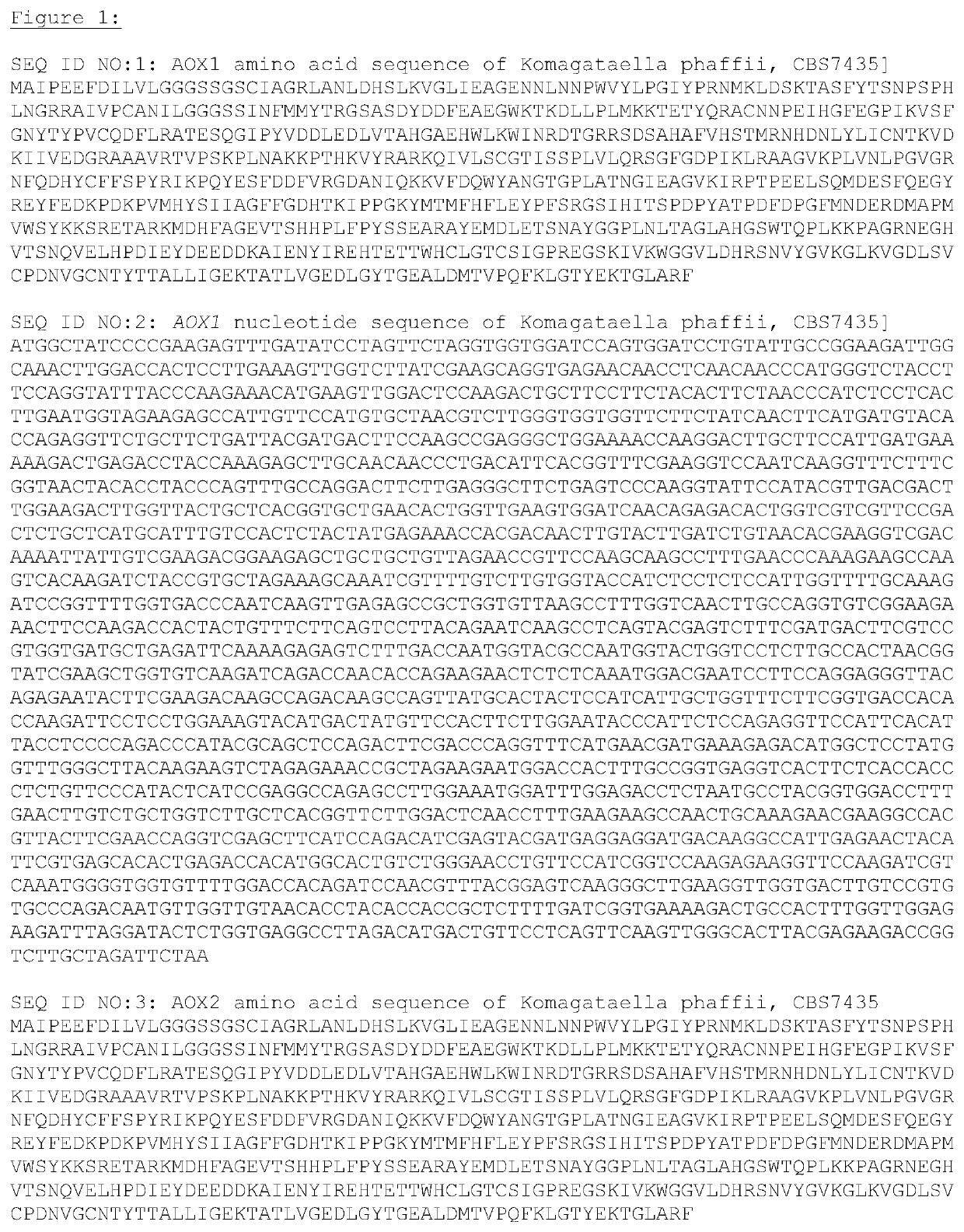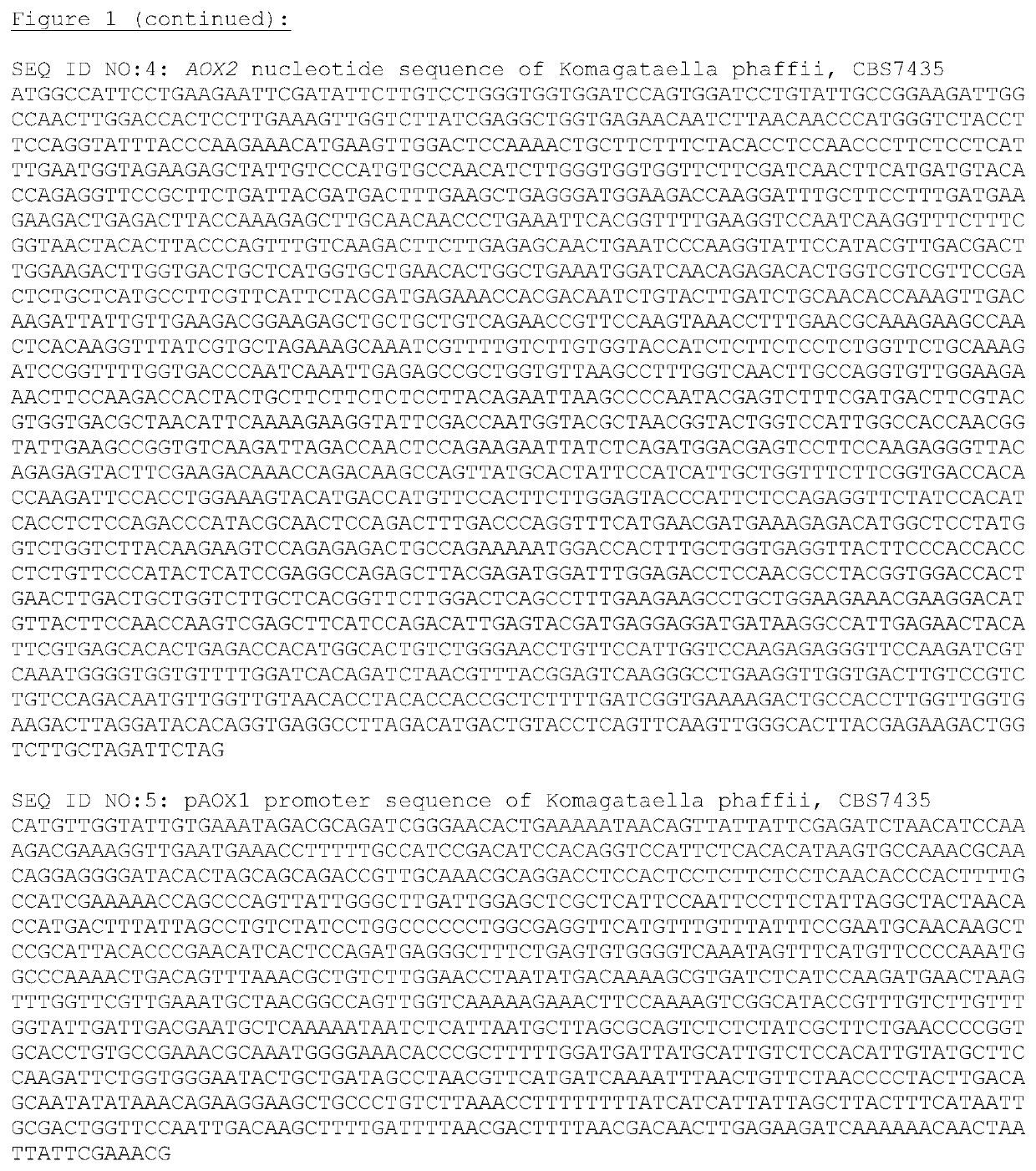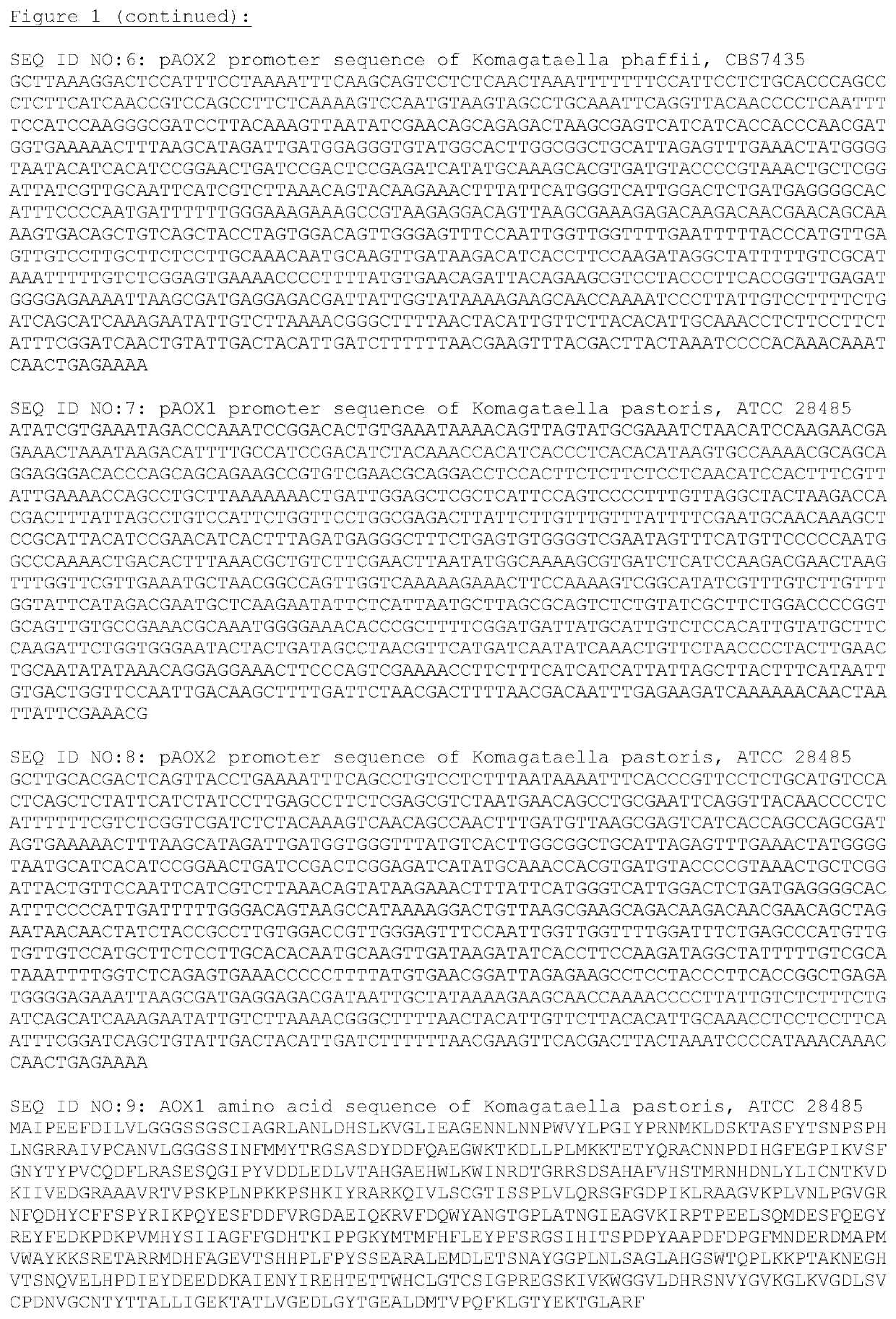Mut- methylotrophic yeast
- Summary
- Abstract
- Description
- Claims
- Application Information
AI Technical Summary
Benefits of technology
Problems solved by technology
Method used
Image
Examples
example 5
r Cultivations
[0405]To determine the behavior and process parameters of P. pastoris Δaox1Δaox2 in fed-batch mode in a recombinant protein production setting, bioreactor cultivations were performed. The cultivations were performed as follows.[0406]a) DASGIP bioreactors were used with a working volume of 0.7 L (Eppendorf AG, Germany). One Bioreactor system consists of four reactors that are arranged in one bio-block for controlling the temperature. Each reactor was connected to 4 peristaltic pumps that were software controlled. Additionally each reactor had 2 balances available that were connected to the DASGIP control software (Eppendorf AG, Germany) for adjusting the pump speed gravimetrically. Each reactor was connected with a controllable gas supply (pressured air, N2, O2 could be mixed in any desired amount) and a gas analyzer for O2 and CO2 concentration measurement in the reactor off gas. The reactors had a pH probe and Dissolved Oxygen (DO) probe connected to the DASGIP contro...
example 6
ng the Evaporation Rate of Methanol from the Bioreactors without Cells
[0413]To assess the evaporation rate of methanol from the reactors by aeration and agitation the reactors were filled with sterile media and pulsed with methanol, samples were taken to determine the methanol concentration.[0414]a) For this example two reactors were filled with 310 mL of BSM media without glycerol and two reactors were filled with 500 mL BSM media without glycerol to simulate the media at the end of the batch phase where the glycerol is consumed by the growing culture.[0415]b) The reactor stirrer speed was set to 760 rpm and gassing to 9.5 sL / h as would be the case in a cultivation of the P. pastoris Δaox1Δaox2. The parameters can be found in Table 7.[0416]c) A 50% (v / v) methanol pulse was added manually to increase the methanol concentration to 1% (v / v) and a sample was taken to determine the actual achieved concentration. Samples were taken at 3.4, 6.5, 22.4, 31.0, 47.9 hours by first removing 3 ...
example 9
on Strategy 2—a Feed Strategy with a Separated Glucose Feed Phase and a Methanol Only Feed Phase
[0431]The P. pastoris Δaox1Δaox2 pPM2pN21_pAOX1_HSAopt_CycTT strain was tested in a recombinant protein production scenario where first a limited glucose feed was applied to increase the biomass followed by a separated phase with a methanol pulse and feed to induce protein production.[0432]a) The bioreactor cultivation was separated into three phases. (1) Phase one consisted of the batch phase on BSM media with a start OD600 of 2. The inoculation was done as described in Example 7a) b). The batch phase lasted for 19.68 and 19.50 hours for reactor R3 and R4, respectively. (2) Phase two was a 50% (w / w) glucose feed at 4.8 mL / h for 25 hours to increase the biomass concentration. (3) Phase three was started with a 50% (v / v) methanol pulse to reach a target concentration of 1.5% (v / v) and a methanol feed profile calculated based on the predicted cell dry weigh and specific methanol uptake rate...
PUM
| Property | Measurement | Unit |
|---|---|---|
| Time | aaaaa | aaaaa |
| Mass | aaaaa | aaaaa |
| Fraction | aaaaa | aaaaa |
Abstract
Description
Claims
Application Information
 Login to View More
Login to View More - R&D
- Intellectual Property
- Life Sciences
- Materials
- Tech Scout
- Unparalleled Data Quality
- Higher Quality Content
- 60% Fewer Hallucinations
Browse by: Latest US Patents, China's latest patents, Technical Efficacy Thesaurus, Application Domain, Technology Topic, Popular Technical Reports.
© 2025 PatSnap. All rights reserved.Legal|Privacy policy|Modern Slavery Act Transparency Statement|Sitemap|About US| Contact US: help@patsnap.com



